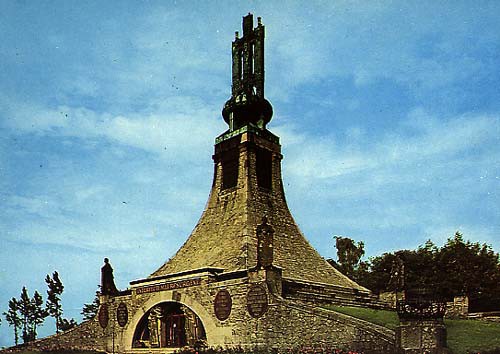Austerlitz entered history following the battle that was fought there on 2nd December, 1805, between the French army led by Napoleon I and the Russian and Austrian coalition led by the Austrian Emperor Francis I and Tsar Alexander I. This battle, which involved three emperors, ended in a victory for Napoleon, with the signing of an armistice on 6th December 1805 and the signing of the Pressburg peace treaty in Bratislava (Pressburg is the old name for Bratislava) on 26th December of the same year.
The battleground at Austerlitz is one of the largest Napoleonic battlesites (about eight miles by six). There are many historic sites and an entire day is needed if you want to visit the main ones. The alphabetical list of these sites is as follows:
-Aujdz (Ujezd u Brna): Napoleon witnessed the disarray of the Russian and Austrian armies on frozen ponds from the Chapel of Saint Anthony.
-Austerlitz (Slavkov u Brna): on the eve of the battle, Alexander I and Francis I set up their battle headquarters in an 18th century, Baroque palace. After the battle had taken place, Napoleon occupied it from 3rd to 6th December, 1805. This is where he wrote his famous speech to his soldiers. An illuminated map of the battle is displayed on the ground floor of the museum.
-Posoritz (parish of Kovalovice): Murat's headquarters in the old imperial post-office.
-Pratzen (Prace): a peace monument was erected at the top of the plateau from the plans drawn by the architect Josef Fanta between 1909 and 1912. This monument, in the shape of a Slavonic tomb, accommodates a chapel. Under the “Peace-Honour” stone slab are the remains of the soldiers that were found on the battleground. Outside, at each corner of the monument, the Cenek Vosmik statues symbolize the warriors of the three fighting armies and an allegory of the battleground.
-“The Santon”: originally Padelek, the mountain was renamed “the Santon” by the soldiers of the Grand Army in memory of a similar place in Egypt. It was a fortified position of the French army during the battle.
-Satschan (Zatcany): the ponds; these days dried-out.
-Schlapanitz (Slapanice): Marshal Soult's headquarters in what is now the town museum.
-Sokolnitz (Sokolnice): location of the French artillery.
-Stare Vinohrady: on this little headland between Krenovice and Prace, General Rapp presented Napoleon with the enemy flags.
-Ziarochitz (Zarosice): Ten miles southeast of Slavkov is located the “Burnt-Down Mill” where Napoleon met the Austrian Emperor on 4th December.
-Zuran (Parish of Podoli): Napoleon's headquarters on the morning of the battle, commemorated with a monument erected in 1930. A three-dimensional map gives the troops' positions.
Trans. P.H.
Austerlitz


